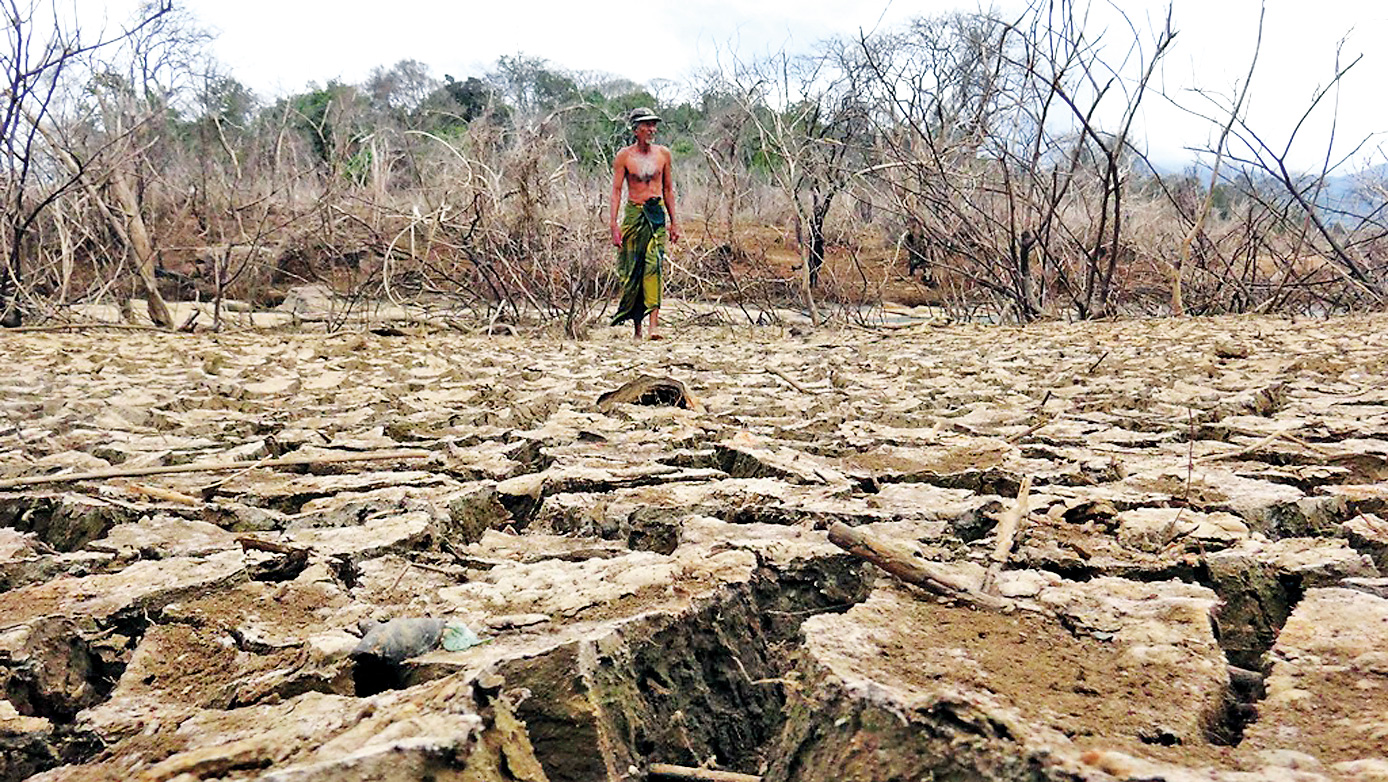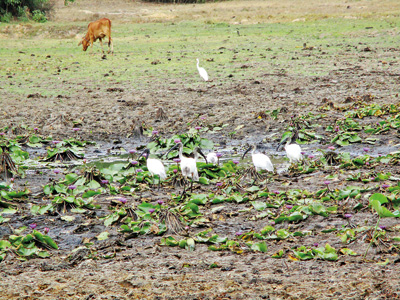News
Farmers ignored advice and now see crops wither
The Irrigation Department asked farmers to grow short-term crops to cope better with drought but many farmers stuck stubbornly to long-term crops – now their harvest hopes are bleak.

Parched earth: Dried up tank in Moragahakande. Pic by Kanchana Kumara Ariyadasa
The department’s Director-General, S. Mohanarajah, said cultivation has suffered in the drought conditions.
“Farmers cultivated long-term crops despite the warnings issued by the department about the lack of water in reservoirs,” he said.
The department issued warnings in February requesting farmers not to go beyond the availability of water and to only grow short-term crops.
“Farmers took a risk,” Mr. Mohanarajah said. The risk has not paid off because there is too little water to irrigate the crops adequately: reservoirs overseen by the department have only a fifth of their normal capacity.
It will continue to be mainly dry in the North, North-Central, East and Uva provinces, the Meteorological Department said. The only falls expected will be in extraordinary circumstances such as when 117mm of rain fell on Thursday in the Jaffna district as a result of wind convergence in the north of the Bay of Bengal and the southern part of India.
“These areas can only expect rain during the second inter-monsoon expected during the months of October and November,” the Duty Meteorologist said.

Bogahawewa: There's little water for bird and beast in this tank. Pic by Jayaratne Wickramaarachchi
Average water capacity in the six main reservoirs now amounts to 34.7 per cent, much less than at this period in previous years.
“In 2018, water capacity was more than 70 per cent while in 2016 capacity was more than 60 per cent,” Power and Renewable Energy Ministry Director of Development, Sulakshana Jayawardena said.
Accordingly, hydro power generation has sunk to 15 per cent, the lowest in years. Previously, during the monsoon, hydro power generation was around 50-60 per cent.
Mr. Jayawardena said the current water level at the Castlereagh reservoir is 49.7 per cent; at Maussakelle, 46 per cent; Kotmale, 69.7 per cent; Victoria, just 20.3 per cent; Randenigala, 20.6 per cent; Samanalawewa, 22.9 per cent.
He said power outages, mainly reported from the Southern Province, were caused by damage to the power distribution units caused by careless tree-felling.
Reports issued by the Disaster Management Centre (DMC) state the drought conditions have deprived 172,324 families of drinking water and water used for household purposes and of being able to gain a livelihood from farming.
The Sabaragamuwa, North-Western, North-Central, Northern, Central, Southern, Uva and Eastern provinces are affected by drought.
The DMC has so far spent more than Rs. 70 million on drought responses including transporting drinking water to families.
The department’s Deputy Director, Pradeep Kodippili, said the DMC will have to consider distributing dry rations if the drought continues.

